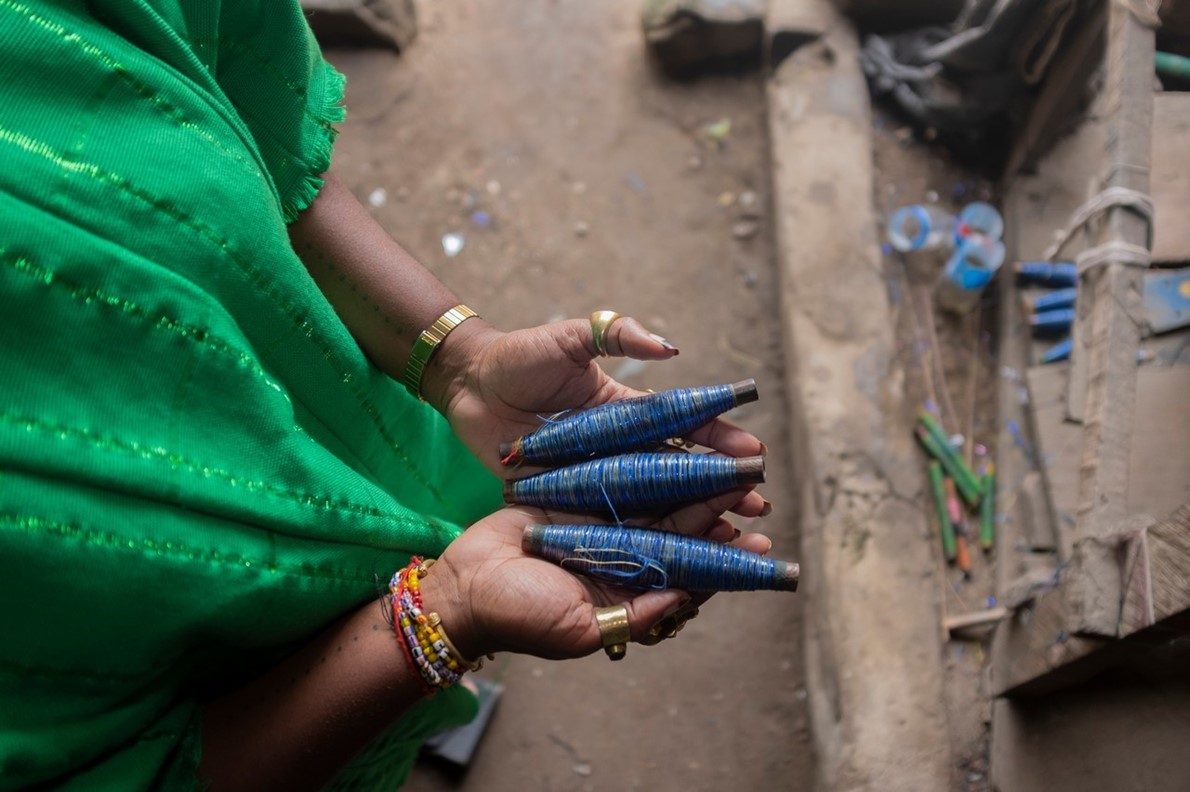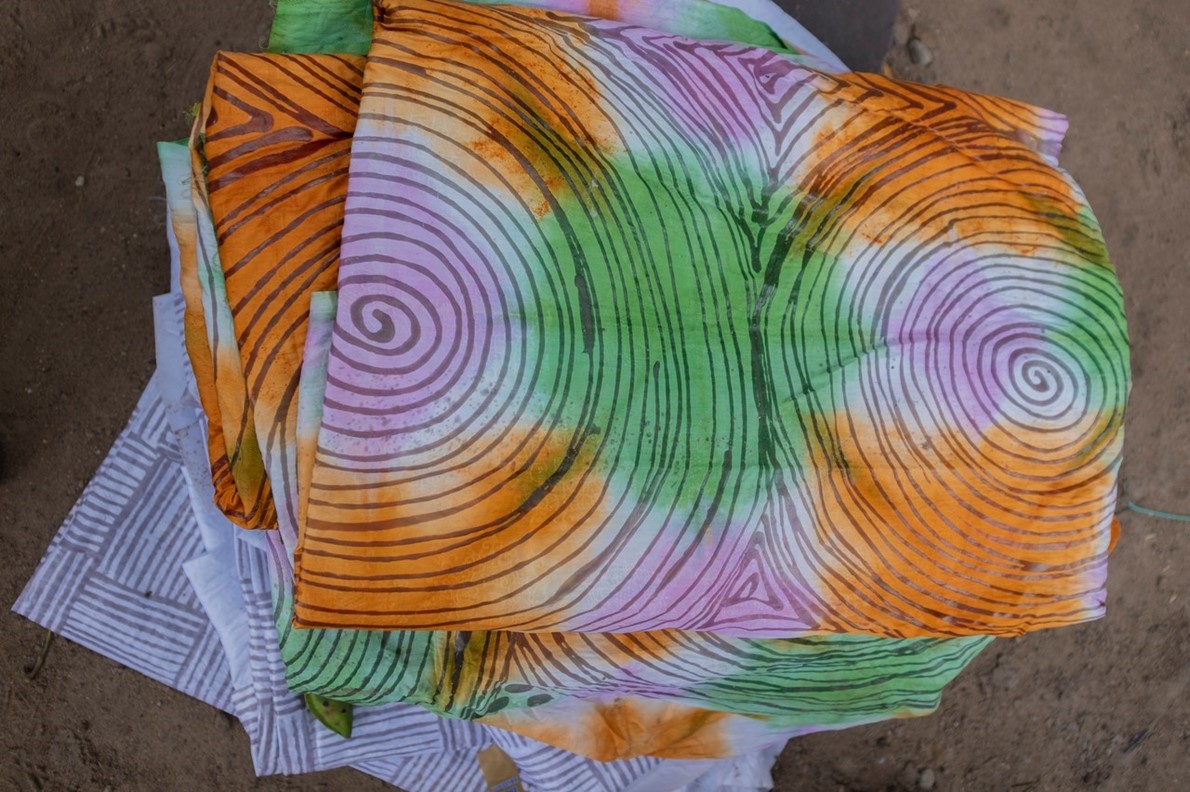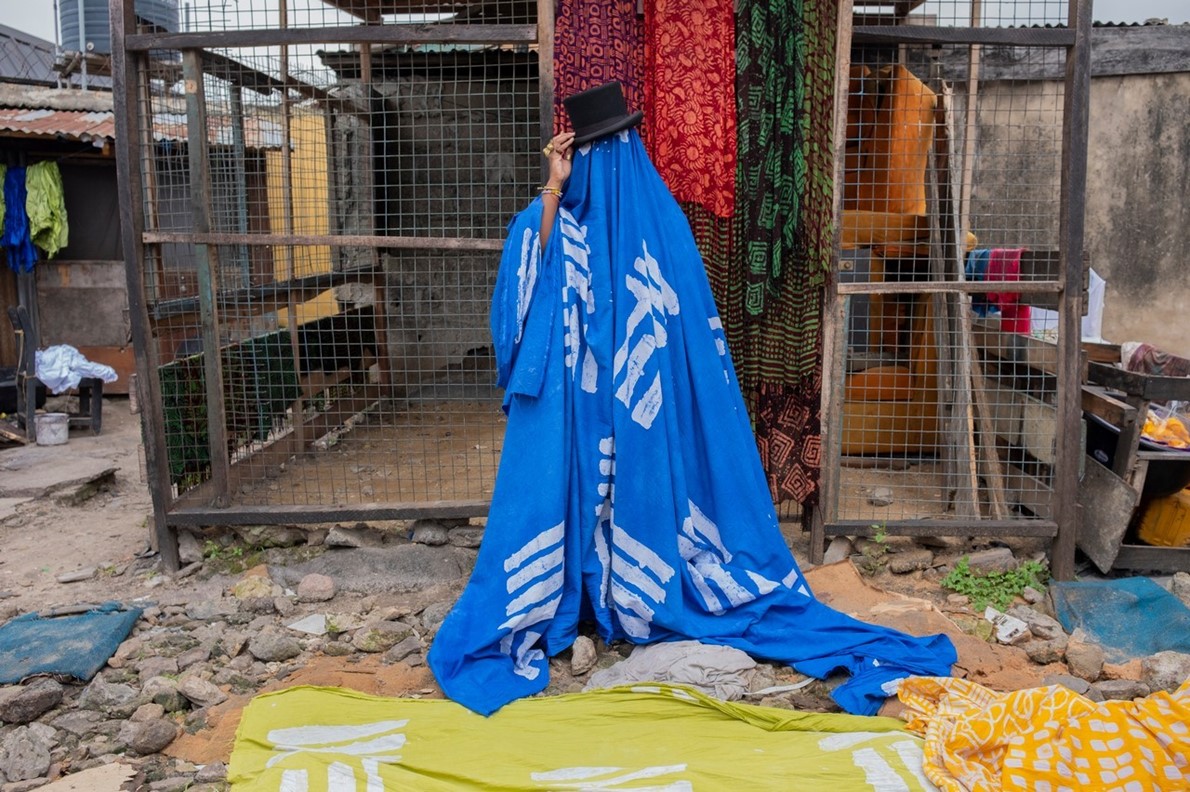Bubu Ogisi was studying fashion in Paris when her
perception of Africa changed. Ogisi, a Nigerian fashion designer from Lagos,
was the only Black person in her class, and she had been assigned to work on a
project about the continent by her teacher.
اضافة اعلان
“I was adding
Egypt, Morocco, everything, and my teacher told me, ‘No, do a project on Africa
— Black Africa.’ I never knew there was a difference. I never knew there was
this divide of how people think about Black Africa and the rest of Africa,” she
said. “It was kind of a shock.”
Ogisi went on to found her womenswear brand,
IAMSIGO, based in Lagos; Nairobi, Kenya; and Accra, Ghana, in 2013, in part to
tell the historical stories of the African continent. Her collections are
composed almost entirely of hand-crafted pieces and revolve around preserving ancient
artisanal techniques and celebrating new ways to create ecologically friendly
fabrics.
She has produced more than a dozen collections in
the years since and has shown her work at fashion weeks in London; Paris;
Lagos; Durban, South Africa; and Bogotá, Colombia. Her designs have been
exhibited throughout Europe and are currently on display at the Victoria and
Albert Museum in London as part of the “Africa Fashion” exhibit.
 Designer Bubu Ogisi working in Lagos, Nigeria on September 17, 2022.
Designer Bubu Ogisi working in Lagos, Nigeria on September 17, 2022.
Ogisi’s work, which is inspired by communities
across the African continent, is unconventional and plays against the
principles and politics of modern industrialization. As a storyteller, she is
interested in communicating the complexities of identity, spirituality, and
culture. And as an artist, she holds an inherent belief in the body as the
ultimate canvas.
“The idea of my work is to decolonize,” Ogisi said.
“To be colonized is to be barricaded, to be controlled, to not be free; so I do
that with textures, gravity, mass, density, lighting, everything possible, to
open everybody’s mind to a better and freer world.”
For her spring-summer 2022 collection, “Green Water,
Blue Forest”, she collaborated with artisans in Kenya who hand-crocheted
recycled plastic and wove together silk, cotton, and hemp from Agraloop, a
company that produces textile-grade fiber from agricultural waste.
Brightly colored plastic, hemp, and cotton,
intentionally left raw and unfinished, are central to the 14-look collection,
which includes tassel dresses, drawstring waist culottes, hand-woven tunics,
and recycled PVC bikini tops. Pieces from IAMSIGO cost $234 to $750 and can be
purchased through the online marketplace Industrie Africa and other retailers.

Ogisi works with a network of artisans in countries
including Ghana, Nigeria, Kenya, Tanzania, Ivory Coast, Uganda, Benin Republic,
Togo, Rwanda, and Senegal. The work does not rely on heavy machinery; instead,
each piece is made almost entirely by hand, and the process to make a single
100-centimeter piece of fabric, which can include weaving, beading, or dyeing, can
take more than a month.
“It’s about fusing what is old with what is new,
preserving what is wasted, and recreating that and reconstructing that into
new,” Ogisi said.
For her accessories, Ogisi has worked with bronze
jewelry makers to create earrings and pendants that take inspiration from masks
used by tribes in Ghana, Nigeria, Benin, and Ivory Coast for religious
purposes. She has also collaborated with other well-known designers like
Kkerele, a Nigerian shoe designer, and Brian Kivuti, a Kenyan jewelry designer.
“I’m in love with her idea of sustainability, the
way she explores what it means to be an African designer in her materials, the
way she weaves and combines materials and the way she considers the history of
the materials and their significance,” Kivuti said.
Ogisi was raised in Lagos and London. As a child,
she was deeply influenced by her surroundings, she said. She would often
observe the differences between each city — the rowdiness of Lagos, the bustle
of London — along with the cultural differences.
“Growing up, I used to be a very shy child,” Ogisi
said. “I loved fashion so much that my clothing became my own medium of
communication.”

She also explores historical narratives through her
work. Past collections have spotlighted the power of the Amazons of Dahomey, a
group of women in West Africa, and the legends of Queen Nyabinghi, a powerful
ancestor in East Africa who spoke through priestesses.
The IAMSIGO autumn-winter 2020 collection, “Chasing
Evil”, in which Ogisi used raffia and recycled cotton, examined her
understanding of fabric as a spiritual entity, channeling the ideas of
self-preservation, self-protection, and how humans connect with different
cultures and different people.
The collection focused on the impact of exploitation
on Congo, but it was also inspired by the Nkisi N’kondi, a Kongolese figurine
and mystical idol used to affirm oaths and ward off evil. In the collection,
Ogisi wanted to explore the idea of clothing as a form of protection.
“I spent five months in different parts of Congo, in
Bukavu and in Kinshasa, and I saw how they took dressing very seriously,” she
said.
“‘Chasing Evil’ envisions how the spirituality of a
garment can create a new identity or aura of self to drive away evil spirits.
It was all about addressing the idea of us as a people but also subliminally
understanding how that connects to different cultures, as well as the materials
that exist in these different places,” she added.
This year, The Tetley in Leeds, England, held the
first major solo exhibition of Ogisi’s work in Europe. The show, “I am not
myself”, which featured a handmade tapestry and original flags, examined the
spirituality that exists within the African masquerade culture. In Africa,
masquerades are seen as ancestors or, partly, amusing messengers of the gods,
who speak in an intricate language that only those who are chosen can
understand.
“I wanted to express the idea of how when you become
a masquerade, you cease to become yourself,” she said. “You become something
else.”
Ogisi “has an intersection of contemporary art
practice and fashion”, said Bryony Bond, the director of The Tetley.
In the exhibit, Ogisi took inspiration from
religious traditions that exist in several African countries including the
Nwatantay of Burkina Faso, the Bedu of Ivory Coast, and the Ogbodo Enyi of
Nigeria.
Bond described it as work that “crosses across both of those
worlds” and brings elements of each into the other.
Read more Fashion
Jordan News








